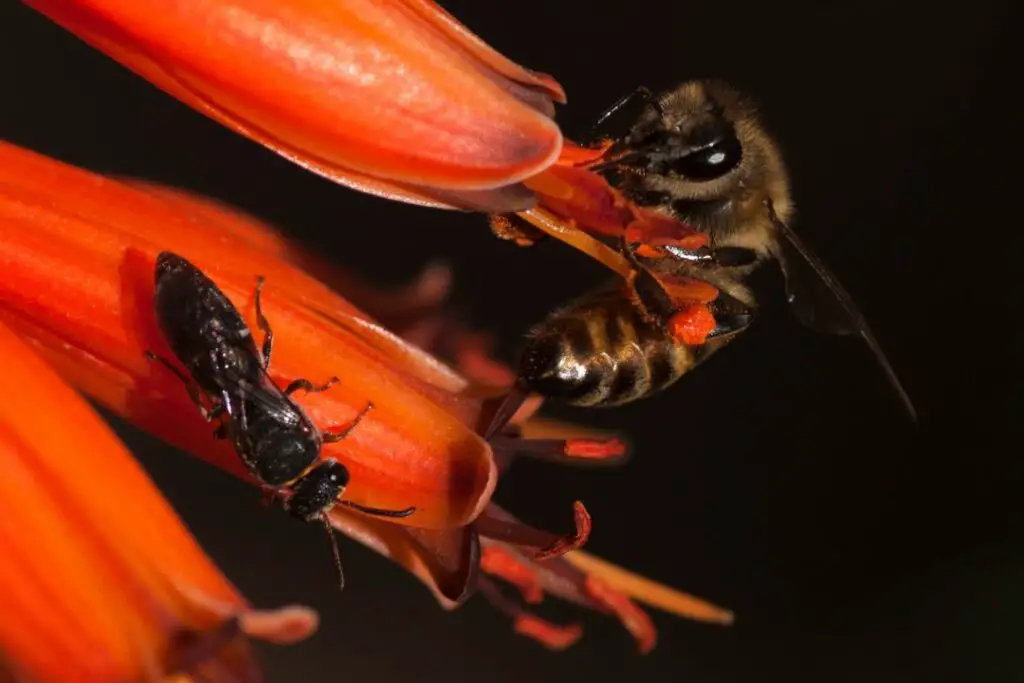Last updated on December 4th, 2023 at 11:11 am
Generally, bees will attack and kill other insects but won’t eat them. Nearly all bees consume a diet of nectar and pollen that they gather from local flowers.
But a few bee species have opted for a more carnivorous path, and others have learned to harvest insects with ingenious methods.
Let’s jump into the question: Why do bees eat other insects, and why is this a common misconception?
*Additional reading – Learn more about a bee’s diet in our guide: What Do Bees Eat?
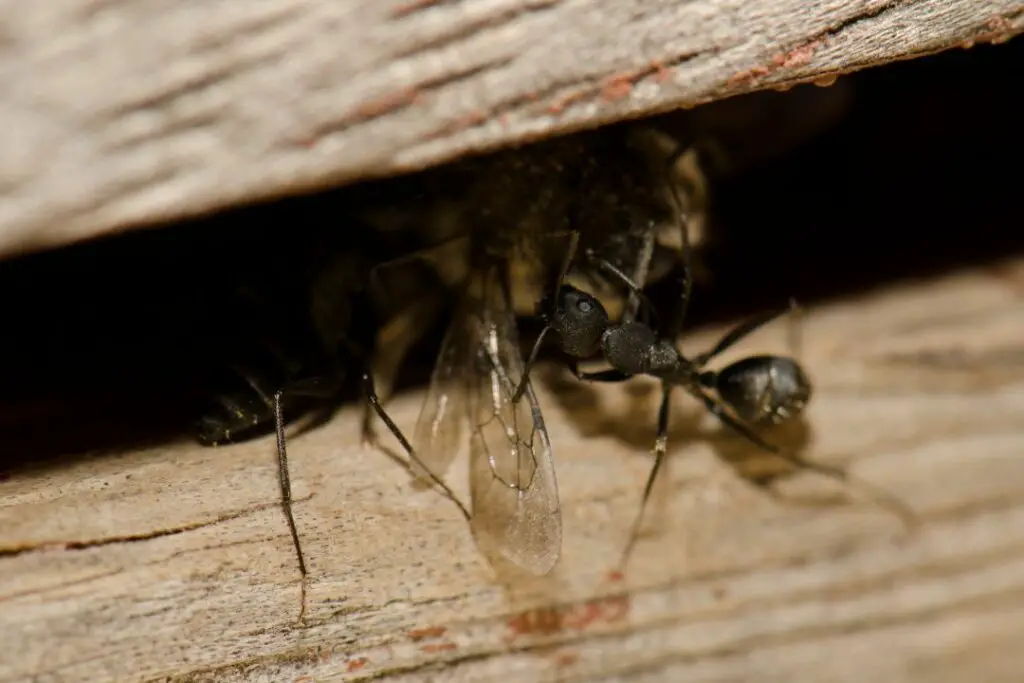
Why Does It Look Like Bees Are Eating Insects?
Now we know bees are vegetarians, why are there moments when it might seem like bees are consuming insects, leading to confusion?
Well, there are several possible reasons; let’s look closer.
Robbing behaviour
Sometimes, bees engage in “robbing”, where they invade other hives to steal honey. It usually happens when there isn’t enough pollen and nectar in the area, causing bee colonies to compete for resources.
During these aggressive invasions, bees might grapple with and kill intruders, which could be mistaken for consuming them, but realistically, they are just killing to defend rather than to eat.
Cleaning the hive
Bees often remove dead bees and larvae from their hive to maintain cleanliness. This helps prevent the spread of infection and disease to the other healthy inhabitants.
They carry the deceased bee or larva away from the hive to do this. This could easily be mistaken as carrying their next meal, but it’s just a form of housekeeping.
Bee species variation
While honeybees feed on nectar and pollen, other bee or wasp species are predators or parasitoids that hunt and feed on other insects.
Some solitary wasps (that could easily be mistaken for a species of bee) capture and paralyze insects to provide fresh food for their developing larvae.
Bee mimics
Various insects, such as hoverflies, have evolved to look remarkably like bees or wasps as a form of protective mimicry.
Some of these mimics are predators of unfortunate smaller insects. If one mistakes a predatory mimic for a bee, it could lead to the false impression that bees eat other insects.
Aphids
Honey bees can and will sometimes eat the sweet secretions of other insects, primarily aphids. This sweet byproduct is Honeydew, packed with the precious sugars bees seek.
Worker bees consume this sweet liquid food source by standing over aphids and extending their proboscis, just like when they extract nectar from flowers. This could easily be mistaken as bees feeding on the aphids themselves, but it’s a peaceful exchange.
Warring queens
The queen bee is the single matriarch of a hive or nest created when bee larvae eat royal jelly fed by nurse bees to initiate their development into a larger queen bee.
But the bees in a hive don’t raise just one. When a virgin queen emerges, she has to fight her way to the throne, which means dispatching (but not eating) her rivals with a combination of her powerful mandibles and stinger.
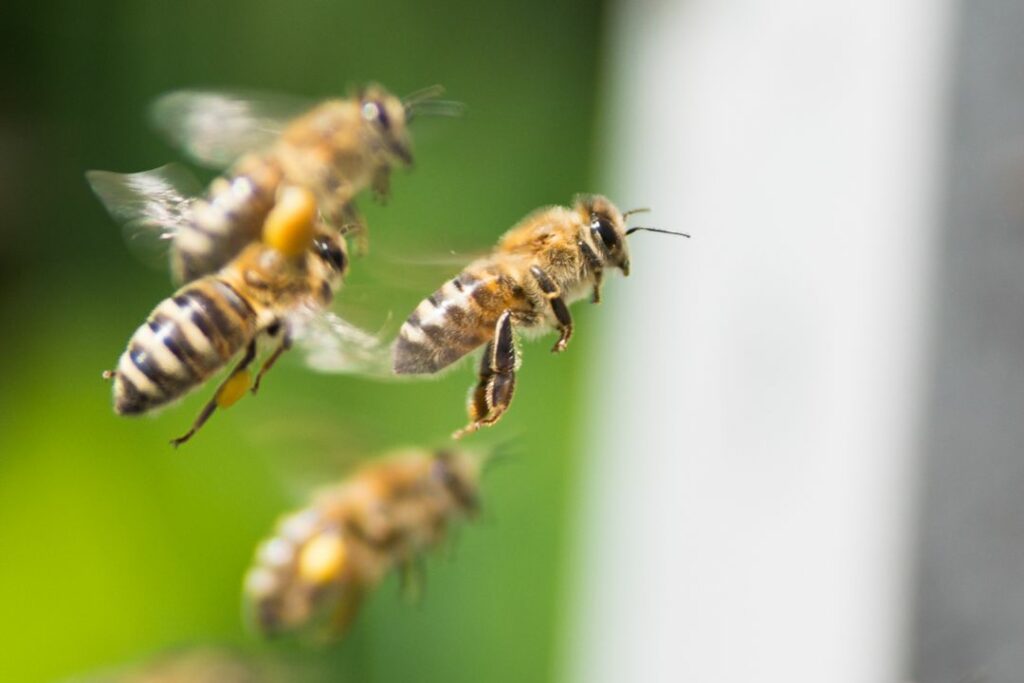
What Do Bees Need To Eat?
Now we know bees aren’t eating insects, let’s look at what they need to survive and thrive.
Depending on their stage of life and role within the colony, dietary needs primarily revolve around two key foods: nectar (or honey) and pollen.
- Nectar and honey: These are the primary energy sources for bees. Nectar is a sugary liquid produced by flowers which bees forage and eat. In the hive, bees process nectar to create honey by evaporating its water content and adding enzymes to alter its composition. Bees store the honey for consumption, especially when nectar is scarce, like during winter.
- Pollen: This is the primary source of protein for bees. Bees eat pollen because it contains essential amino acids for their growth and development. Besides proteins, pollen provides bees with fats, vitamins, and minerals. Pollen is particularly important for larval development.
Different bees within the hive have varied dietary requirements:
- Larvae: Nurse bees feed the larvae a “bee bread,” made from fermented pollen mixed with honey. Very young larvae are initially fed with royal jelly, a protein-rich secretion from the glands of nurse bees.
- Queen bee: Throughout her larval stage, the queen is exclusively fed a substance called royal jelly, which triggers her development into a fertile queen rather than a worker bee. As an adult, the queen consumes royal jelly provided by worker bees.
- Worker bees: Adult workers primarily consume honey (for energy) and some pollen for proteins and other nutrients.
- Drones: Male bees, or drones, eat honey and bee bread. Their primary role is to mate with a queen, so they rely on the worker bees to provide food.
In essence, bees require a combination of nectar (or honey) for carbohydrates and pollen for proteins and other nutrients to maintain their health and ensure the continued growth and survival of the colony.
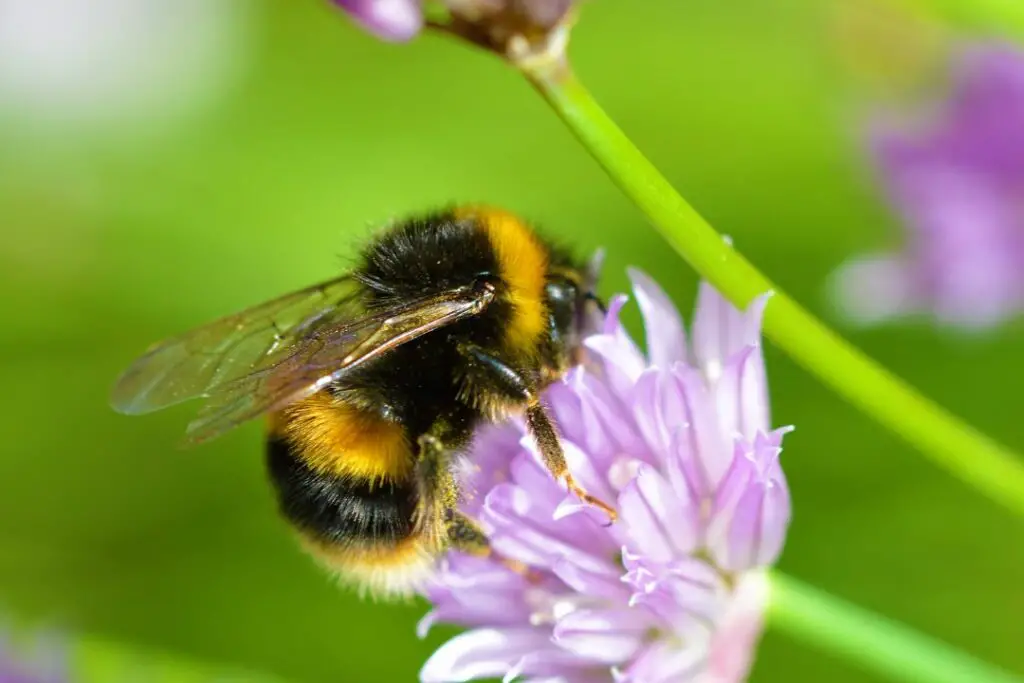
Do Bees Attack Or Defend Against Insects?
Bees work as a team, and while female worker bees are industrious pollinators, they can also be fierce defenders when they feel threatened.
If other insects like wasps or ants attack the hive, they will be met with swift and violent retaliation. Bees have developed powerful pheromones that can signal and attract bees to the area.
These bees gather together to attack any unwanted visitors en masse, using their painful barbed stingers to force them back from the hive.
Insects don’t have the same stretchy elastic skin we have as mammals. This means adult honey bees can sting insects repeatedly without the risk of damaging their abdomen when they remove their barbed stinger.
To the untrained eye, this bustle of activity could look like bees eating insects, but in reality, they’re just defending their home against potential invaders.
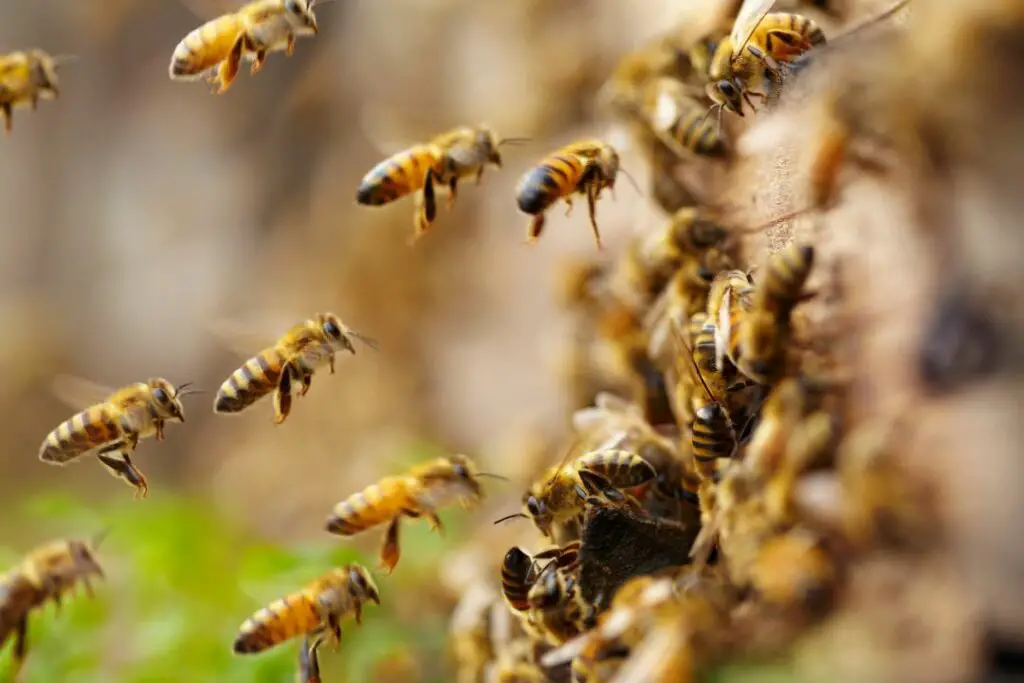
Are There Any Kinds Of Bees That Eat Other Insects?
One type of bee may not eat insects, but it does eat meat. The vulture bee is an unusual specimen that evolved to consume dead carrion.
While most bees collect pollen and nectar from flowers, these stingless bees gather flesh from the carcasses of dead animals.
It uses its powerful mandibles to tear flesh, which is returned to the nest. It’s then processed just like when bees make honey, leading to a protein-rich solution that gives these amazing bees energy.
Unlike honey bees, these wild bees don’t collect and store honey, only producing enough for the nest’s inhabitants (not that we wanted to try some anyway).
In Conclusion
Now we know bees consume a combination of pollen, nectar and honey to get all the energy and nutrients they need to thrive.
While bees will sometimes attack other insects in defence, they won’t consume them afterwards, and some bees will even consume the secretions of small insects.
Head over to our guide on which animals eat insects to learn more about bee’s deadly predators.

